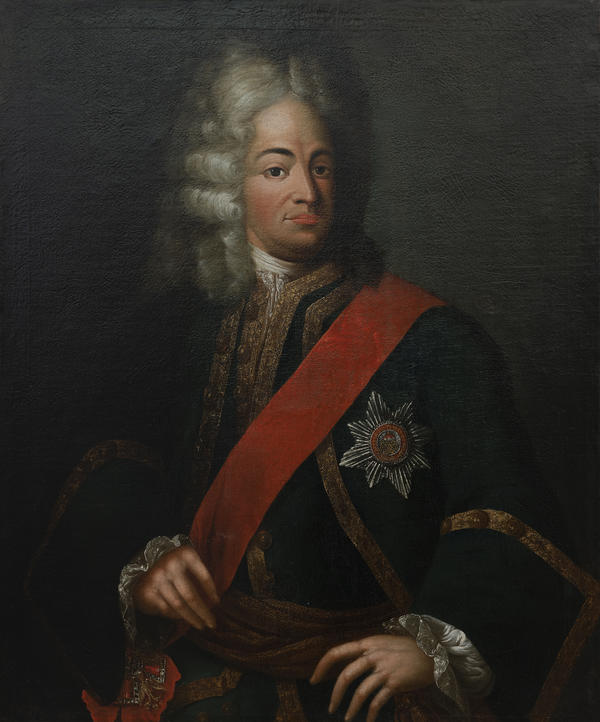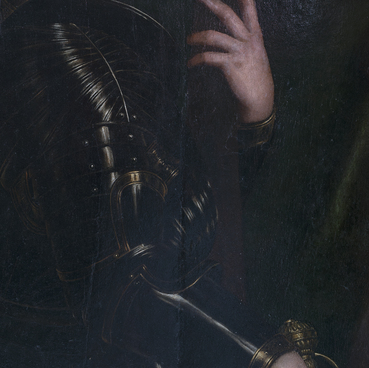The era of Peter the Great transformed the Russian State. The State became an empire. Until the reign of Peter I, art in Russia was religious in nature and served as a temple. Secular art appeared with the accession of the great reformer to the throne. And above all, there was a portrait that was official, ceremonial in nature. First of all, the artists emphasized the social, state significance of the individual: services to the Motherland on the battlefield, in the state and society.
Portrait of the Unknown with the Order of Alexander Nevsky can be called the ‘face’ of the harsh era of Peter the Great. The painting entered the museum fund as a work of an unknown artist of the 18th century, without defining the kind of troops in which a man on the portrait serves. According to the uniform, it was possible to establish that the officer served in the Preobrazhensky regiment: it was the first life-guard regiment of the Russian army, which in the Peter’s epoch became famous for the battles at Pskov and Narva and in the Poltava battle.
Portrait of the Unknown with the Order of Alexander Nevsky can be called the ‘face’ of the harsh era of Peter the Great. The painting entered the museum fund as a work of an unknown artist of the 18th century, without defining the kind of troops in which a man on the portrait serves. According to the uniform, it was possible to establish that the officer served in the Preobrazhensky regiment: it was the first life-guard regiment of the Russian army, which in the Peter’s epoch became famous for the battles at Pskov and Narva and in the Poltava battle.
Peter I conceived the Order of St. Alexander Nevsky to reward the soldiers for military services, but it was established after the death of Peter by Catherine I on May 21 (June 1), 1725. For the first time, 18 people became the cavaliers of the Order on the wedding day of the daughter of Catherine and Peter I, Princess Anna and Charles-Friedrich, Duke of Schleswig-Holstein-Gottorp. Judging by the list of the awarded persons, the order was intended to reward people of not the highest ranks, corresponding approximately to the lieutenant-general or major-general.
However, on August 30 (September 10), 1725, the anniversary of the transfer of the relics of St. Alexander Nevsky from Vladimir, Empress Catherine I granted the order to herself, as well as to 21 more people from the highest nobility, including Polish King Augustus II and King Frederick IV of Denmark. The Order was established as a reward to those of the ranks of lieutenant general and above. It is quite possible that the man depicted in the portrait is one of the first knights of the Order, which is confirmed by several other facts.
A magnificent wig, crowning the proudly throwning head of the bearer of the Order is called “allonge”. It was used until the end of the 20s — beginning of the 30s of the 18th century. Then a different type of wig became fashionable, “Binnette”. So the portrait of the officer could be created in the late 20's — early 30's and no later than 1735. It was at this time that the floors of the caftan of the Preobrazhensky regiment’s soldiers became shorter, they were rounded off, and put backwards as it was more convenient on the march. It is in this caftan that an officer is depicted. Based on these facts, we can assume that the Portrait of the Unknown with the Order of Alexander Nevsky was written in the period of 1725-1735. This work came to the Tyumen Museum from a private collection.



